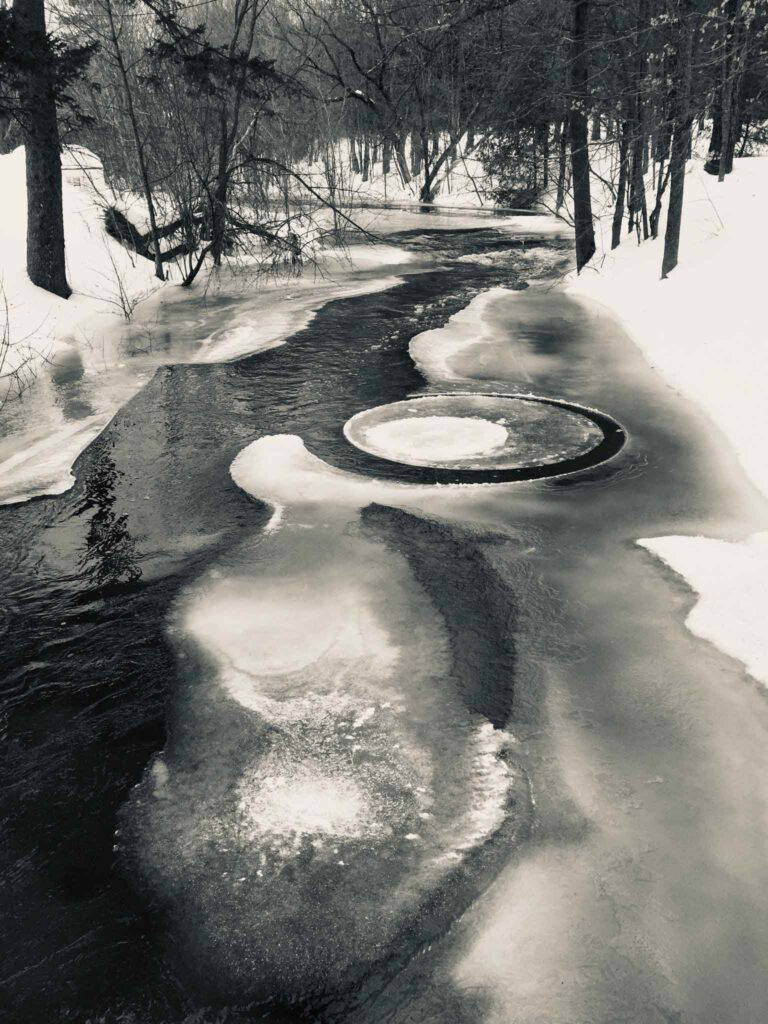Everything You Need to Know About Ice Fishing in Maine
Winter in Maine, like the other three seasons in Vacationland, locals spend it outdoors. Natural, clean, crisp and sugar coated new white. Have you ever lived where the snow glistens? And looked up in a Maine winter night sky to see all the brilliant points of lights on the black velvet backdrop? Get to Maine, sample all four of the seasons on the calendar to see what you are missing!
Maine’s long winters bring a unique tradition that transforms frozen lakes into bustling, temporary villages of shanties and fisherman: ice fishing.
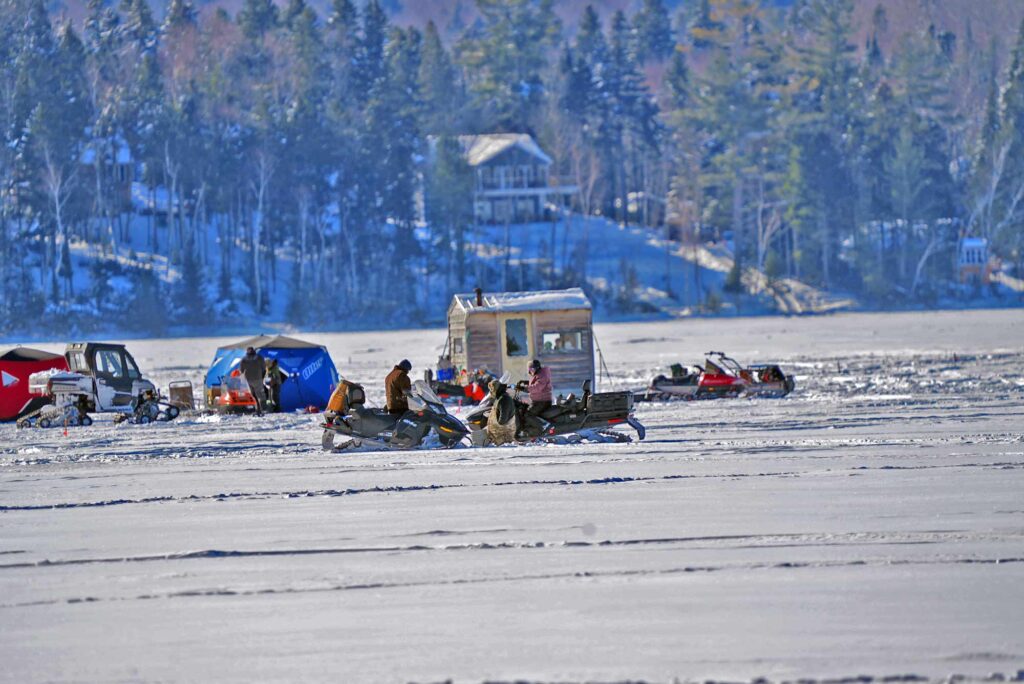
Get your shiners, a bucket of bait at $5 a dozen announced on the Mac’s Trading Post in Houlton sign. Noticed the invitation to buy ice fishing bait from my neighbor just down the street and on the other side.
Let’s head to the Maine lake with ice fishing traps.
Whether you’re a seasoned angler or have never stepped foot on a frozen Maine lake before, there’s an undeniable magic to the sport—one that goes beyond the fish beneath the ice. It’s about the camaraderie, the fresh air, and the winter traditional thrill of the catch.
Getting Started: Drilling Holes & Setting Up
Choosing the Right Bait & Cost
The type of bait you use can make a big difference in what you catch. Common bait options include:
- Live Smelt – Great for catching lake trout and landlocked salmon, usually costing around $5-$10 per dozen.
- Shiners – Ideal for bass, perch, and pike, available for $5-$8 per dozen.
- Nightcrawlers & Worms – Effective for brook trout and perch, costing about $3-$5 per container.
- Cut Bait – Used for cusk and lake trout, typically priced at $5 per package.
Bait shops near popular Maine ice fishing lakes usually stock all of these options, making it easy to find what you need before heading out.
Ice fishing begins with cutting a hole through the ice, which can be done using a hand auger, a gas-powered auger, or even a chisel. Many anglers drill multiple holes to increase their chances of success, setting up tip-ups or jigging rods at various depths depending on the fish species they’re targeting. 5 traps at a time limit to ice fishing and it is a pretty slow, not to strenuous winter waterfront sport.
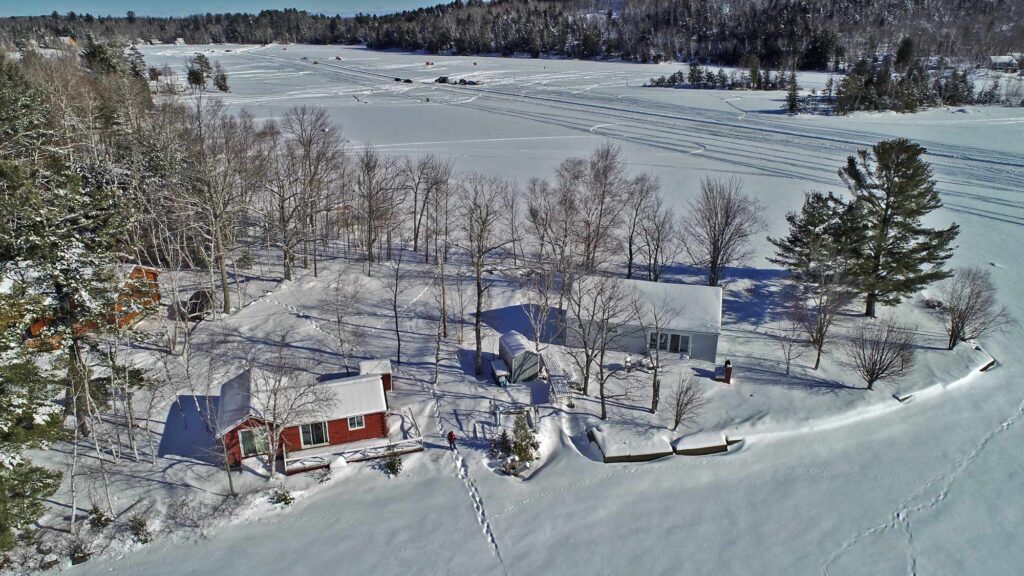
Best Maine Lakes for Ice Fishing & What You’ll Catch
Maine is home to hundreds of excellent ice fishing spots, each offering a variety of species:
- Sebago Lake (Large, deep lake, 100+ feet) – Known for its legendary lake trout (togue) and landlocked salmon.
- Moosehead Lake (Large, deep lake, 80-150 feet) – A haven for brook trout and cusk, plus stunning winter scenery.
- Great Pond (Medium-depth lake, 20-50 feet) – Offers a solid mix of perch, bass, and pickerel.
- Eagle Lake (Medium-depth lake, 20-60 feet) – Ideal for northern pike, known for their aggressive fight.
- West Grand Lake (Large, deep lake, 100+ feet) – Home to trophy-sized landlocked salmon.
- East Grand Lake (Large, deep lake, 50-120 feet) – Famous for its salmon, trout, and smallmouth bass fishing.
- Aroostook County Lakes (Varied depths, small to large lakes) – Lakes like Long Lake, Eagle Lake, and Portage Lake are excellent for brook trout, salmon, and yellow perch. The deep, cold waters of many Aroostook lakes make them ideal for trout fishing, while the shallower waters are great for perch and pickerel.
Each lake in Vacationland has its own rules and regulations, including bag limits and species restrictions, so checking with Maine Inland Fisheries and Wildlife before heading out is crucial.
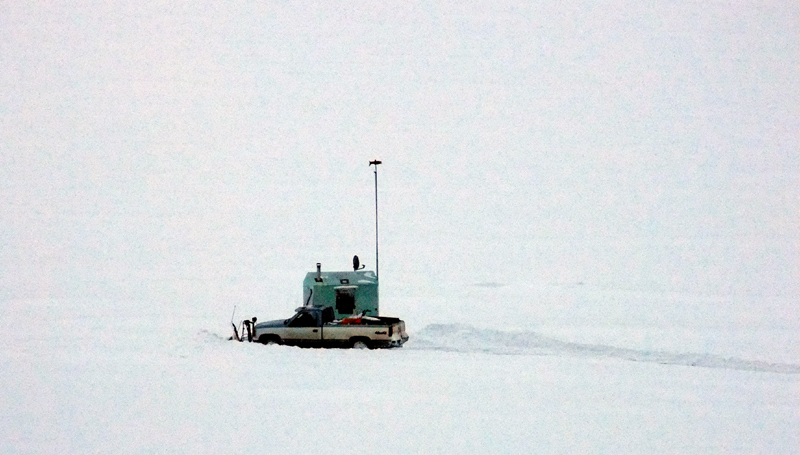
Regulations & Maine Lake Ice Shack Rules
Good Stewardship & Environmental Responsibility
One of the biggest challenges Maine game wardens face is ensuring that ice shacks and all debris are removed before the ice melts in the spring. Every year, abandoned structures and litter create hazards for Maine’s pristine lakes.
It is essential to remove everything—including trash, broken fishing lines, and leftover bait—to protect this natural resource. Even blackened firewood from a fire doused with water after a day 0r season ice fishing at the Maine lake.
Why It Matters:
- Plastic can holders and other debris – These pose dangers to Maine fish and other wildlife that can become entangled or ingest harmful materials.
- Old ice shack debris – If left behind, it can sink into the lake, polluting the water and disrupting aquatic life.
- Responsible fishing ensures future seasons – Cleaning up and following regulations help maintain healthy Maine fish populations and lake ecosystems.
Maine game wardens frequently patrol to enforce these rules, but ultimately, it is up to every angler to do their part in preserving Maine’s waters for future generations.
Maine’s ice fishing season typically runs from January 1st through March 31st in the southern regions, while northern Maine lakes often freeze earlier.
Some waters are open for ice fishing year-round, so be sure to consult Maine’s fishing regulations.
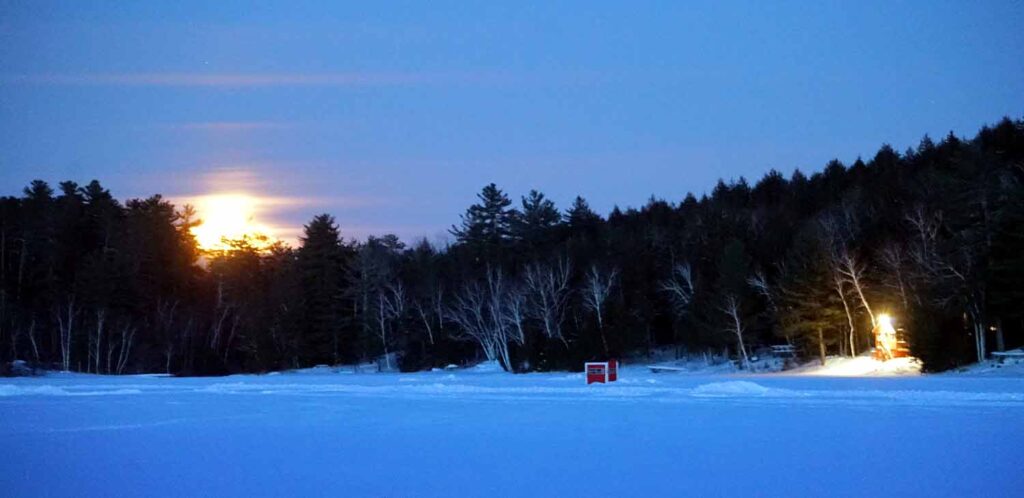
Ice Shack Guidelines:
- Permanent ice shacks must be removed from the ice before April 1st.
- All shacks must have the owner’s name and address clearly displayed.
- While some lakes allow temporary shelters to be left overnight, others require daily removal.
How to Stay Safe on the Ice
Understanding ice thickness is essential for safety:
- 4 inches – Safe for foot traffic.
- 5-7 inches – Supports ATVs and snowmobiles.
- 8-12 inches – Suitable for cars.
- 12-15 inches – Strong enough for trucks and ice shacks.
Always check ice conditions before heading out on a Maine lake and bring safety gear like ice picks, a throw rope, and a buddy.

Why You Don’t See Ice Shacks on the Ocean?
Unlike Maine freshwater lakes, the ocean ice is unpredictable and dangerous due to tides, currents, and salt content. Those weakens the ice. Even if ice forms on coastal waters, it can shift and break apart quickly, making it unsafe for long-term structures like ice shacks. This is why ice fishing in Maine remains a freshwater tradition.
The Social Side of Ice Fishing.
Ice fishing isn’t just about the fish; it’s about the Maine lake experience. Many fishermen set up their ice shacks in small clusters, creating a winter village of anglers. With a small propane heater inside, shacks are surprisingly cozy. Some bring portable grills for fresh-cooked meals right on the ice, while others gather around a bonfire for warmth and storytelling.
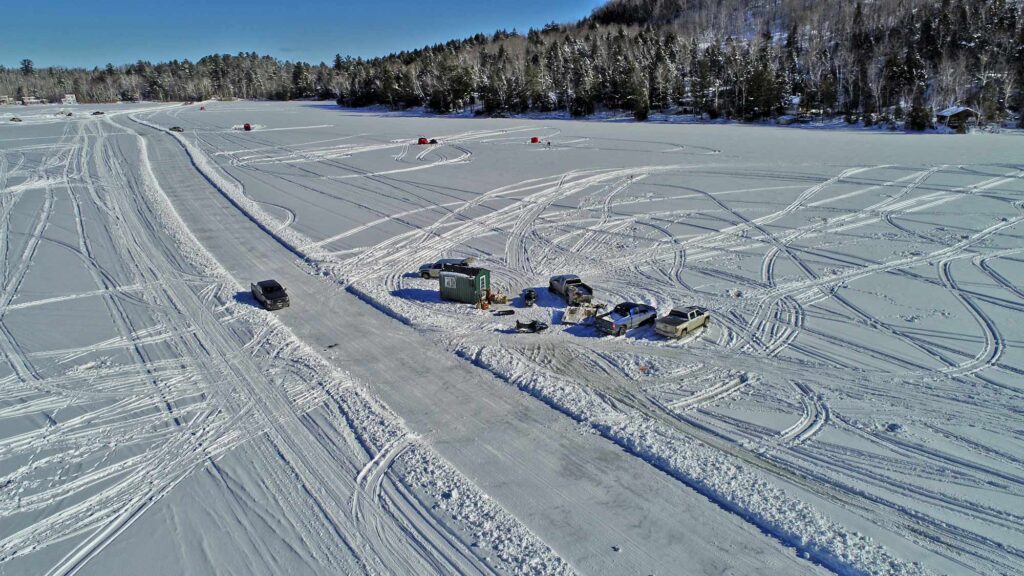
Kids love the freedom of ice fishing camps, running around with sleds and playing with dogs while adults tend to the lines.
Pond hockey games from cleared sections, snowmobiles pulling flying saucers.
Ice fishing is a slow sport, one where patience is rewarded. Time slows down enough to appreciate nature’s beauty. The sun rises and sets on the Maine lake while your lungs fill with fresh air and the feeling of a deafening quiet with wide open space surrounding you. It can be a tad windy out on an open Maine lake. Bundle up the kids, don’t leave Rover or Fido at home. They like social, shaking off cabin fever in Maine too!
Why Ice Fishing is Worth Trying?
Ice fishing in Maine is more than standing on a frozen lake waiting for a flag to pop up. It’s an escape, a chance to breathe in the fresh winter air, bond with friends and family, and enjoy the stillness of nature. Whether you’re chasing the thrill of landing a trophy trout during a fishing derby or just enjoying a day with loved ones, ice fishing is an experience unlike any other.
So bundle up, grab some bait, and head out onto the ice. The Maine adventure—and the fish—are waiting! But yes, you do need a ice fishing license in Maine to angle for fish and wet your line.
